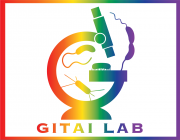Escherichia coli translation strategies differ across carbon, nitrogen and phosphorus limitation conditions
Type
For cells to grow faster they must increase their protein production rate. Microorganisms have traditionally been thought to accomplish this increase by producing more ribosomes to enhance protein synthesis capacity, leading to the linear relationship between ribosome level and growth rate observed under most growth conditions previously examined. Past studies have suggested that this linear relationship represents an optimal resource allocation strategy for each growth rate, independent of any specific nutrient state. Here we investigate protein production strategies in continuous cultures limited for carbon, nitrogen and phosphorus, which differentially impact substrate supply for protein versus nucleic acid metabolism. Unexpectedly, we find that at slow growth rates, Escherichia coli achieves the same protein production rate using three different strategies under the three different nutrient limitations. Under phosphorus (P) limitation, translation is slow due to a particularly low abundance of ribosomes, which are RNA-rich and thus particularly costly for phosphorous-limited cells. Under nitrogen (N) limitation, translation elongation is slowed by processes including ribosome stalling at glutamine codons. Under carbon (C) limitation, translation is slowed by accumulation of inactive ribosomes not bound to messenger RNA. These extra ribosomes enable rapid growth acceleration during nutrient upshift. Thus, bacteria tune ribosome usage across different limiting nutrients to enable balanced nutrient-limited growth while also preparing for future nutrient upshifts.

